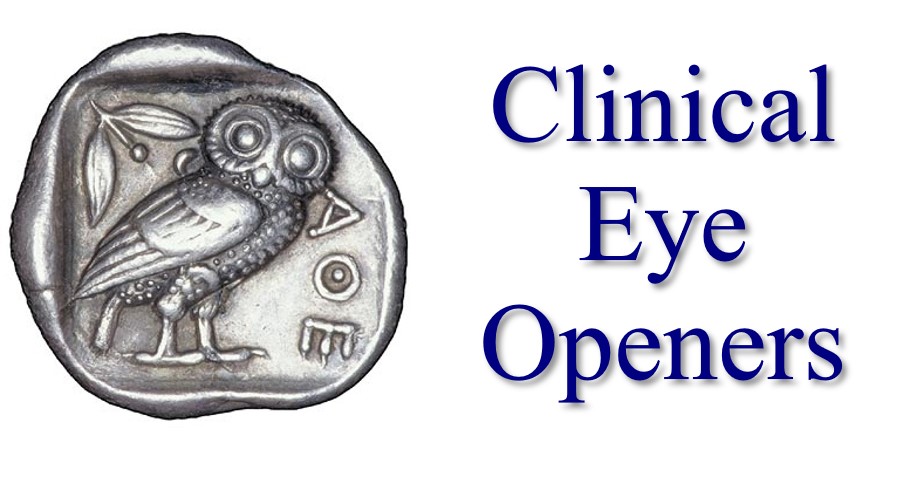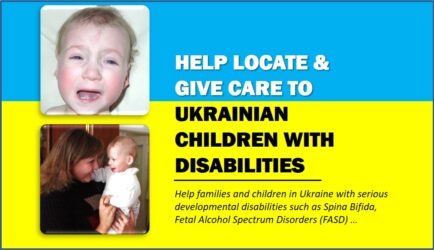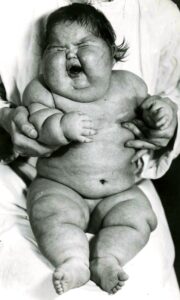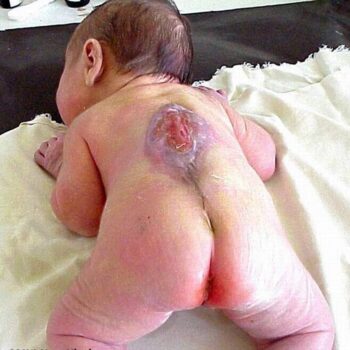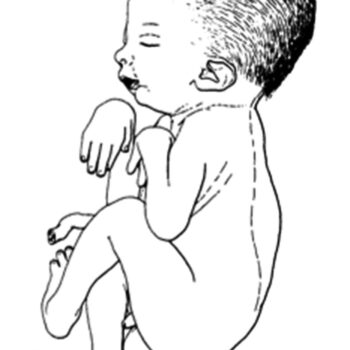Obesity or Cushing Syndrome?
Please click to enlarge.
Note what signs you see.
I (W. Wertelecki, M.D.) see an obvious access of subcutaneous tissues. Such infant poses an urgent and difficult diagnostic dilemma.
PERSPECTIVE: About 3% of obese children may have Cushing syndrome. Once you have a full set of detected signs from which you select those that are signals, then you can try to synthetize the signals into a syndrome. Next, you could seek evidence of pathogenesis or etiology which may allow you to propose a diagnosis.
I will propose that this is an instance of Cushing syndrome. It is not a diagnosis because the causes, treatments and prognosis largely depend of what is the source of an excess of glucocorticoids. This may be due to an adrenal neoplasia resulting in high hyper-cortico-lism (cortisone). There may be other source and location of tumors but all would represent an endogenous source. This infant may have also been treated with cortisone (exogenous source). This exercise underscores the contrast between etiology and pathogenesis and that syndromes may be recognized by visual and other signs without knowledge about them.
